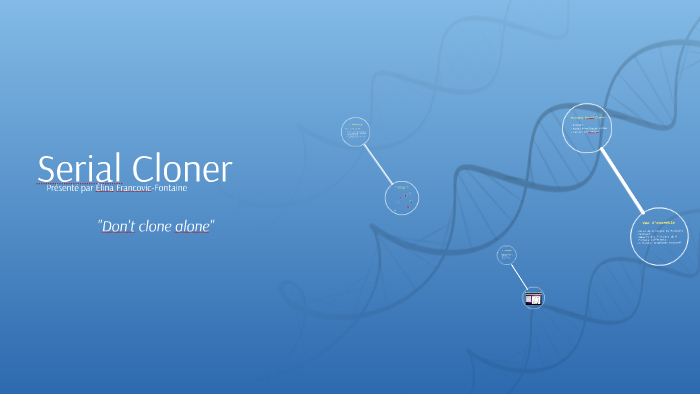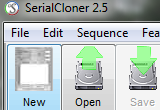
- #Serial cloner delete features how to#
- #Serial cloner delete features drivers#
- #Serial cloner delete features driver#
A PVC can use one of the pre-created storage classes or a user-defined storage class to create an Azure-managed disk for the desired SKU and size. A PVC is used to automatically provision storage based on a storage class. To use these storage classes, create a PVC and respective pod that references and uses them. You just need to edit the persistent volume claim (PVC) with the new size. The storage classes also configure the PVs to be expandable. The reclaim policy in both storage classes ensures that the underlying Azure Disks are deleted when the respective PV is deleted.
#Serial cloner delete features driver#
When you use the Azure Disk CSI driver on AKS, there are two more built-in StorageClasses that use the Azure Disk CSI storage driver. For more information on Kubernetes storage classes, see Kubernetes storage classes. Dynamically create Azure Disks PVs by using the built-in storage classesĪ storage class is used to define how a unit of storage is dynamically created with a persistent volume. For static provisioning, see Create a static volume with Azure Disks.įor more information on Kubernetes volumes, see Storage options for applications in AKS.
#Serial cloner delete features how to#
This article shows you how to dynamically create PVs with Azure disk for use by a single pod in an AKS cluster. A PV can be used by one or many pods and can be dynamically or statically provisioned. Use CSI persistent volumes with Azure DisksĪ persistent volume (PV) represents a piece of storage that's provisioned for use with Kubernetes pods. For a list of VM SKUs offered and their corresponding detailed capacity limits, see General purpose virtual machine sizes. To identify the limit per VM SKU, review the Max data disks column for each VM SKU offered. For some powerful VMs (for example, 16 cores), the limit is 64 volumes per node.

For more information, including which regions are supported, see Zone-redundant storage for managed disks.ĭepending on the VM SKU that's being used, the Azure Disk CSI driver might have a per-node volume limit.

ZRS disk could be scheduled on the zone or non-zone node, without the restriction that disk volume should be co-located in the same zone as a given node.

There's significant improvement when there are multiple disks attaching to one node.
#Serial cloner delete features drivers#
In-tree drivers attach or detach disks in serial, while CSI drivers attach or detach disks in batch.Performance improvements during concurrent disk attach and detach.In addition to in-tree driver features, Azure Disk CSI driver supports the following features: In-tree drivers refers to the current storage drivers that are part of the core Kubernetes code versus the new CSI drivers, which are plug-ins.


 0 kommentar(er)
0 kommentar(er)
